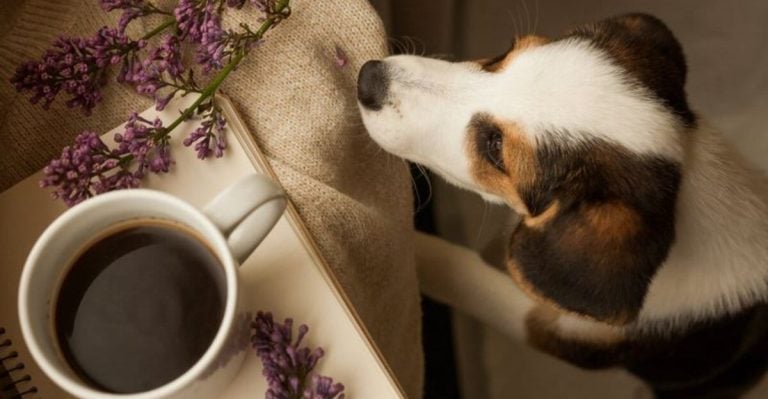12 Ways You’re Accidentally Making Your Dog’s Anxiety Worse
Our furry friends can struggle with anxiety just like humans do. What many pet parents don’t realize is that some of our everyday habits might actually be making their anxiety worse.
Understanding how our actions affect our dogs’ emotional wellbeing is the first step to helping them feel more secure and confident.
1. Missing The Warning Signs
Your dog communicates anxiety through subtle body language long before more obvious signs appear. Excessive panting, pinned-back ears, tucked tails, and avoiding eye contact are early indicators that your pup feels stressed.
Many owners mistake these signals for other behaviors or simply don’t recognize them until the anxiety escalates to barking, destructive behavior, or aggression. Learning to spot these early warning signs gives you a chance to address the situation before it worsens.
Keep a journal of situations that trigger these behaviors. This documentation helps identify patterns and provides valuable information if you eventually need professional help.
2. Scolding Fearful Behaviors
When your dog growls at the vacuum cleaner or hides during thunderstorms, punishing these reactions only confirms their suspicion that something terrible is happening.
Your dog isn’t being stubborn or disobedient—they’re genuinely scared. Punishment creates a damaging cycle: your dog feels afraid, expresses that fear, then gets punished for it. This teaches them to suppress warning signs without addressing the underlying anxiety, potentially leading to unpredictable behavior later.
Instead of scolding, create positive associations with scary situations through treats, play, and patience. This approach helps your dog build confidence rather than fear both the trigger and your reaction.
3. Crate Misuse
Your dog’s crate should be their sanctuary—a comfortable den where they feel protected. When used as punishment or prolonged confinement, it transforms from safe haven to stress chamber.
Dogs forced into crates during anxiety-inducing situations without proper training learn to associate their crate with negative feelings. The confined space can amplify anxiety, especially if triggers like fireworks or visitors already stress them.
Make the crate a positive space by feeding meals there, adding comfortable bedding, and providing special toys. Never use it for time-outs or punishment, and ensure your dog can enter and exit freely when possible.
4. Forced Social Interactions
“He just needs to get used to it!” This common but misguided approach forces anxious dogs to face their fears head-on. Dragging your reluctant dog to dog parks or crowded streets doesn’t build confidence—it creates trauma.
Forced exposure without proper desensitization intensifies anxiety and can lead to defensive aggression. Your dog learns they have no escape from frightening situations, making them more reactive when encountering similar triggers in the future.
Respect your dog’s comfort zone and work with them through gradual, positive exposure techniques. Let them set the pace for social interactions, rewarding calm behavior and never forcing encounters they’re clearly uncomfortable with.
5. Insufficient Exercise And Enrichment
Boredom and pent-up energy create the perfect breeding ground for anxiety. Dogs are naturally active creatures with bodies and minds designed for regular stimulation.
Without proper outlets, that energy transforms into destructive behaviors, excessive barking, or anxious pacing. Mental exercise is just as crucial as physical activity. Problem-solving toys, training sessions, and sniff walks engage your dog’s brain in ways that a simple physical workout can’t match.
Tailor activities to your dog’s breed, age, and personality. A border collie needs different stimulation than a bulldog, but both require appropriate outlets to prevent anxiety from taking root in an understimulated mind.
6. Unpredictable Daily Routines
Dogs thrive on consistency. Your unpredictable schedule—feeding at different times, inconsistent walks, or varying bedtimes—creates genuine stress for your four-legged friend who can’t understand why routines keep changing.
Without reliable patterns, dogs exist in a state of uncertainty about when their basic needs will be met. This uncertainty manifests as clingy behavior, resource guarding, or separation anxiety as they try to cope with an unpredictable world.
Create a schedule that works for both of you. Even on weekends or busy days, maintaining consistent meal times, walks, and sleep schedules provides the security your anxious dog craves and reduces their overall stress levels.
7. Extended Periods Of Isolation
Dogs are pack animals evolved for companionship. Leaving them alone for extended periods—whether for work, travel, or social activities—can trigger profound anxiety in even the most well-adjusted pups.
Prolonged solitude without proper preparation teaches dogs that isolation is unpredictable and scary. This realization often manifests as destructive behaviors, excessive vocalization, or desperate escape attempts when you’re gone.
Gradually build your dog’s confidence with alone time through short separations before longer ones. Consider dog walkers, pet sitters, or doggy daycare for long work days. Even a tired dog will handle alone time better than one left with excess energy and no outlet.
8. Delaying Professional Guidance
Many owners wait until anxiety behaviors become unbearable before seeking help, hoping their dog will simply outgrow the problem. This delay allows anxiety patterns to become deeply ingrained and significantly harder to address.
Professional trainers and veterinary behaviorists offer specialized knowledge that goes beyond basic training tips. They can identify underlying medical issues, develop customized behavior modification plans, and recommend appropriate interventions before the situation deteriorates.
Early intervention prevents anxiety from escalating into aggression, self-harm, or chronic stress that damages your dog’s physical health. Don’t wait until you’re at your wit’s end—reaching out for expert help demonstrates responsible ownership, not failure.
9. Comfort At The Wrong Moment
Rushing to cuddle your trembling dog during a thunderstorm feels natural, but it might accidentally reward and reinforce their fearful response. Your attention becomes a powerful reinforcer that tells your dog their panic is appropriate.
The timing of comfort matters tremendously. Soothing an anxious dog while they’re actively displaying fear behaviors can inadvertently teach them that showing anxiety gets them the attention they crave.
Instead, reward calm moments before anxiety escalates. Create positive associations with anxiety triggers through treats and play when they’re relaxed, and redirect their attention with commands they know well. This approach comforts without reinforcing the fear response.
10. Applying Human Anxiety Solutions
Essential oils, over-the-counter supplements, or sharing your anti-anxiety medication might seem like helpful solutions, but these human remedies can harm your dog. Their bodies process substances differently than ours, and what calms you might endanger them.
Some common human relaxation aids like lavender oil, melatonin supplements, or CBD products aren’t regulated for pet use. Dosing is unpredictable, and quality varies widely. Worst of all, human medications can be toxic to dogs even in small amounts.
Always consult your veterinarian before trying any anxiety remedy. They can recommend scientifically-proven options specifically formulated for canine physiology, from prescription medications to properly tested supplements designed for dogs.
11. Sensory Overload Environments
Loud music, crowded rooms, and constantly changing household activities create sensory chaos for dogs, whose hearing and smell are far more sensitive than ours. What feels like normal household bustle to you might overwhelm your dog’s nervous system.
Dogs need predictable, controlled environments with quiet spaces to retreat when stimulation becomes too much. Without these sanctuaries, they remain in a constant state of alertness that exhausts their coping mechanisms and heightens anxiety.
Create a designated quiet zone in your home where your dog can escape overwhelming situations. Keep consistent background noise levels, limit unnecessary scented products, and be mindful of chaotic environments during holidays or parties when anxiety triggers multiply.
12. Unrealistic Expectations
“My friend’s dog loves car rides, why is mine so difficult?” Comparing your anxious dog to others creates frustration and disappointment that your dog can sense. Each dog has unique experiences, genetics, and personality that shape their fears and reactions.
Setting expectations based on other dogs ignores your pet’s individual needs and history. This mindset leads to pushing your dog beyond their comfort zone or feeling discouraged when progress seems slow compared to other pets.
Celebrate your dog’s small victories instead of measuring them against others. The neighbor’s dog might love strangers, but your rescue who overcame fear enough to accept treats from visitors has achieved something remarkable given their starting point.


















